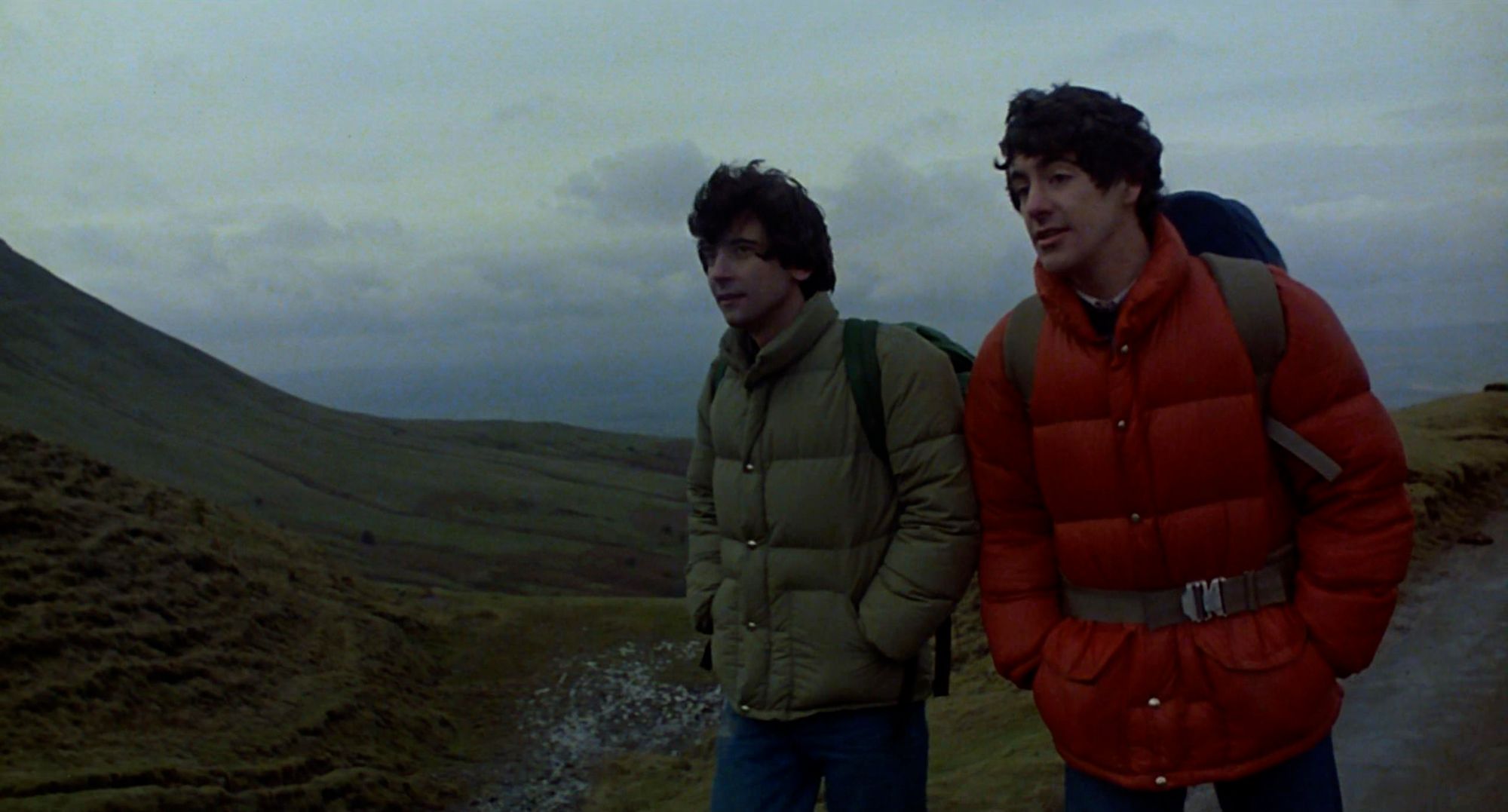The Genius of An American Werewolf in London (1981)
Why John Landis's wolfman classic is one of the greatest films ever made.

Sometimes in cinema — if not often, once in a blue moon — masterpieces cleverly disguise themselves as lighthearted entertainment. They’re easy to consume, make you laugh, scare you, leave you completely entertained, but are also masterfully crafted stories that reach deep into human nature and explore its depths.
A lot of great art is like this. Shakespeare’s plays were considered bawdy. Don Quixote was the pulp fiction novel (or a clever satire of one) of its time. The movies of many great filmmakers, like Stanley Kubrick and Alfred Hitchcock, have this quality in spades.
An American Werewolf in London fits the bill. It’s a masterpiece for the everyman. A blockbuster horror movie that cuts deep and is close to (if such a thing exists) perfect filmmaking. It has superb acting, amazing photography, and effects that exceed what should have been possible — relying not on CGI departments but on forceful creative vision and attention to detail. The effects don’t just hold up but are amazing, doing what they intend while leaving just enough space for the viewer to breathe their imagination into things. On top of all the above, the movie has an amazing and universal story to tell.
The film looks great. It shows the English countryside with mood and beauty. The image is slightly dull, but rich in colour. A feast for the eyes. It’s not overly dramatic, but visually hints at melancholy. London looks drab, rainy, and pretty. Shots of neon signage and urban bustle create a lively downtown feeling full of British character. The image has a beautiful grain and colour treatment. Camera movement is also really nice — understated, it adds to the sense of quality. Great photography tends to go hand in hand with great films, and AWIL ticks this box easily.
Throughout the story a message to “live carefully” echoes and repeats, like the howls of the wolfman carried over the otherwise tranquil, moonlit moors of the English countryside. These are the words Nurse Alex Price uses to explain to David how she survives in London despite living expenses being so high. And in the countryside, the alternative to London’s big city life, the message is exactly the same but for different reasons. One must take care to survive physically: stay on the roads, keep clear of the moors, beware of the moon. Keep your head down and your mouth shut. Don’t speak to outsiders.
Whether in the city or the countryside, everyone feels the need to live with great care just to survive. As if they are living under threat. Fearful, perhaps, of the monster within: the werewolf. The werewolf, or wolfman, represents violence and sexual desire — associations hammered home by sudden moments of blood and gore (wolf-like monsters dressed in Nazi-like uniforms storming into David’s dreams with submachine guns, slaughtering everything in sight) and a culture obsessed with sex (London is shown overflowing with porno advertisements and movie theatres, and you can’t turn on the TV without seeing soft porn).
The werewolf is a force of nature, tied to the lunar cycle, and this makes the threat it presents universal. Whether in the city or out in the countryside, the danger is basically the same. Everyone is, in fact, living under threat.
Cultural dislocation and confusion is a big theme. It is an American werewolf, dislocated in London. The barkeep saw “The Alamo” but in London, in the cinema. David and Jack seek respite in an alien culture they don’t understand past a superficial appreciation. David believes he will be arrested for publicly disrespecting the Queen, for example, which he (hilariously) attempts to make use of in an attempt to be confined to the safety of a jail cell.
The British are aware of American culture to a surprising extent, but at the same time it is all very odd and incomprehensible to them. The two cultures are at once kindred, but also distrustful towards one another. This helps create the feeling of things being “not quite right.” Our protagonists are strangers in a culturally distorted land that often threatens to become hostile.
Artistically, perhaps the most powerful thing the movie does is to mask its darkness under a lighthearted, comedic surface. This gets to its heart and soul.
Hiding the dark side of human nature and the evil of the world under a lighthearted surface, and essentially ignoring all the horrible things going on at any moment, is to some extent what we all do to get by in the modern world. It’s a big, if largely unspoken, part of life in the information age.
AWIL mirrors this truth in the way it plays with genre conventions. It “attempts” to present itself as a lighthearted comedy, David and Jack eager to make a joke out of everything, but the full moon keeps causing real, undeniable darkness and evil to break through this facade, puncturing the false normality and eventually causing it to collapse.
As the full moon approaches, David’s nightmares flood the screen with terror in vivid, jolting flashes that include the aforementioned nazi monsters with machine guns, as well as seeing himself running naked in the woods then suddenly devouring a deer and eating chunks of its flesh raw. David’s psyche is breaking through and making him aware in dreams of horrors he doesn’t want to deal with in the real world.
Jack, who serves narratively almost as a Doppelgänger to David, appears to be in love with a girl back home he has known for most of his life, but the love is unrequited — a fact he is in denial about. When David meets Nurse Alex Price, who falls for him madly (though this time David does not return her love back in equal measure, at least at first), she describes him as “very attractive, and a little bit sad.” Alex sees through David’s cheery and upbeat facade. Complicating these romantic entanglements is the fact that David has become a werewolf by the time they meet, though he is in denial about this fact as well. The story is a romantic tragedy for both of them.
In order to protect themselves from undesirable truths, whether about being a werewolf or being in love with someone who does not feel the same way, David and Jack both construct facades of happiness and try to live inside them — which fails spectacularly.
David is tortured, a monster literally growing inside him, ready to burst out. Once its dominance over him is inevitable, the people who love him are the only ones that can help. His best friend Jack appears in his dreams to convince him that he is better off killing himself, in order to avoid creating new victims on each full moon. Nurse Alex Price goes to great lengths trying to protect him, while refusing to accept that he is a werewolf for as long as possible.
The concept of being convinced by someone who loves you to kill yourself before you hurt others is supremely dark — though it is put over with some comical tone, which takes the edge off. In this way the movie creates a deep unease, its darkness revealing itself in stages, each glimpse of it slightly masked or distorted. It creeps up on you, but by the final sequence the mood has become apocalyptically dark and gruesomely tragic.
The movie’s ending is sudden, hitting with some surprise. Music blasts in like an emotional palate cleanser as the credits roll, with a sped-up doo-wop version of “Blue Moon” playing on the soundtrack — a song that plays multiple times in various versions throughout the film, including the opening sequence.
The ending leaves you as a viewer almost dizzy, suddenly pulling you out of a tale and fictional world you were deeply immersed in a moment before. It also calls attention to how immersed you were in the reality of the film world. This is visceral, emotionally engaging storytelling of a pure and timeless form, that shows the medium of cinema at its best.
The sudden ending also suggests to the viewer not to attempt to derive immediate and final resolution from it. It’s a story that needs to travel a bit further in the viewer’s mind after having watched the movie, digesting what it was saying as art as well as feeling what the story was saying, before it is really complete.
There is a plethora of movie genres and styles of filmmaking, exploring countless topics from every angle imaginable — but storytelling never really gets better, or more entertaining, than An American Werewolf in London.
James Lanternman writes movie reviews, essays, and moonlit thoughts. You can reach him at [email protected].
Previously… Two reptiles
